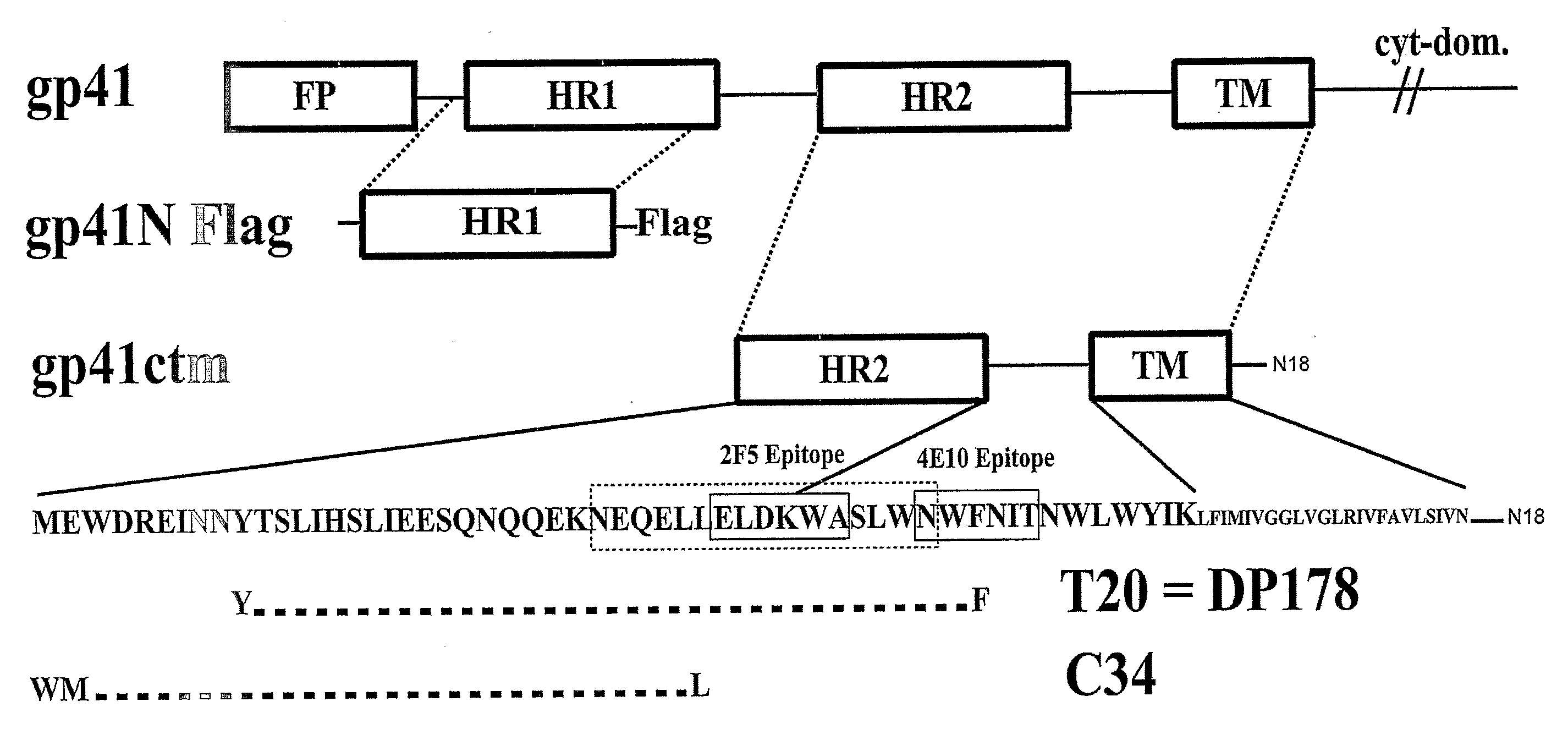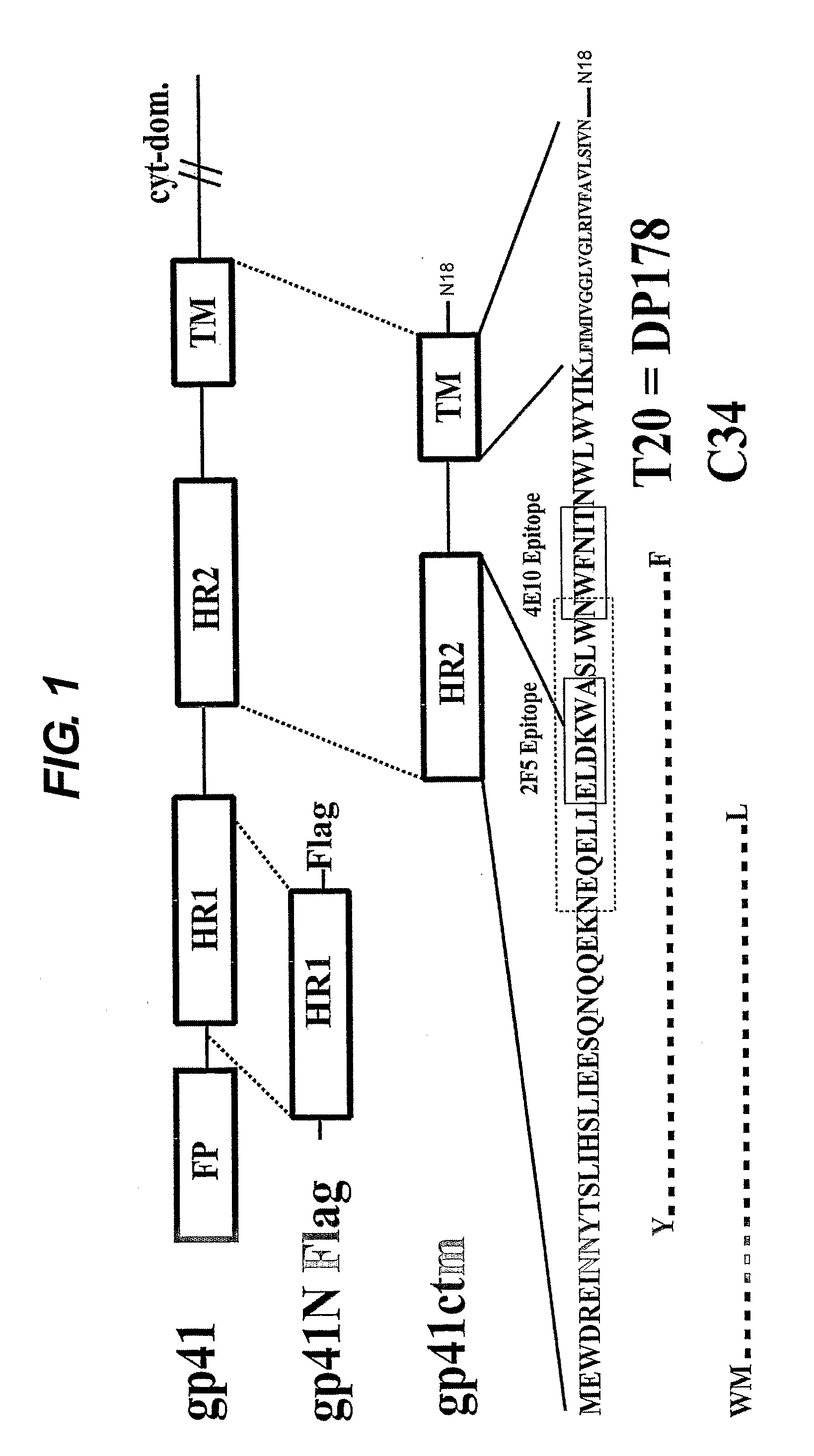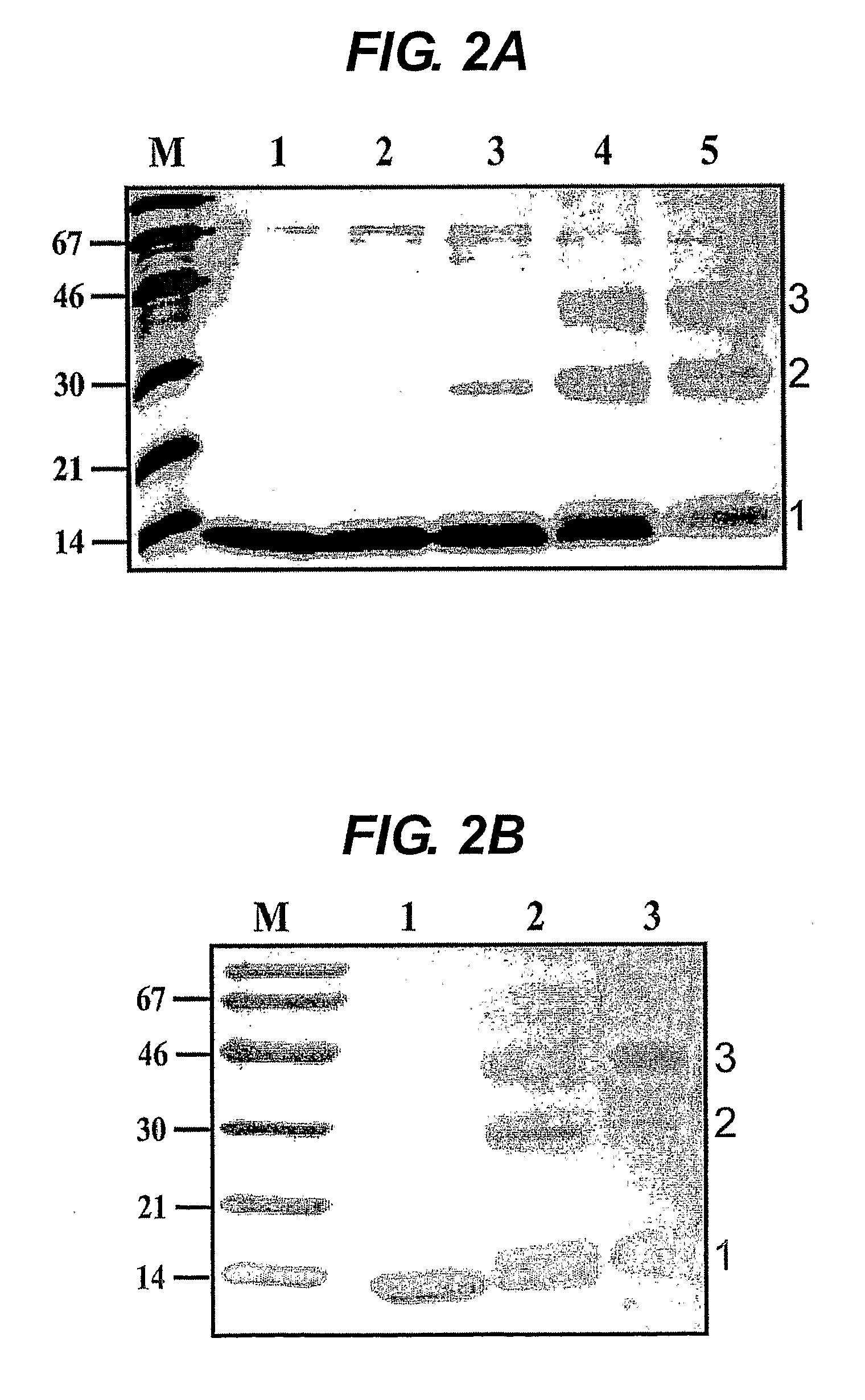Inhibitors of Infection
- Summary
- Abstract
- Description
- Claims
- Application Information
AI Technical Summary
Benefits of technology
Problems solved by technology
Method used
Image
Examples
example 1
[0181]The present inventors have created a gp41 construct (gp41ctm) comprising the Env transmembrane domain and the extracellular C-terminal region, including peptide regions that have been shown to exert fusion inhibition (e.g. T-20 and C34) (FIG. 1). The Env transmembrane domain constitutes a trimerization domain. Trimeric gp41ctm is protease resistant and recognized by mAbs 2F5 and 4E10. It also exerts potent anti-viral activity either in solution or when incorporated into liposomes. Initial immunization studies in mice indicate low immunogenicity of gp41ctm in solution while liposome-incorporated gp41ctm generates IgG and IgA responses that show neutralization capacity.
Materials and Methods
[0182]Expression constructs. HIV-1 (strain HXB2R) gp41 cDNA (nucleic acid position 1885 to 2118; gp41 residues 118-195) was amplified by standard PCR and cloned into the expression vector pRSET (Invitrogen). DNA sequencing revealed the C-terminal addition of 18 amino acids encoded by the vecto...
example 2
[0206]The present inventors have also created an HIV-1 gp41 construct comprising a soluble oligomerization domain (a trimeric version of the 30 amino acid coiled coil in GCN4) and part of the extracellular C-terminal region, which includes the peptide region comprising the 4E10 epitope and the extended 2F5 epitope (SEQ ID NO: 18). The soluble oligomerization domain constitutes a trimerization domain. The trimeric construct is recognised by mAbs 2F5 and 4E10, confirming functional 2F5 and 4E10 epitope presentation.
Materials and Methods
[0207]Expression of a gp41 sequence fused to a trimeric coiled coil region derived from the transcription factor GCN4. HIV-1 (strain HXB2R) gp41 cDNA (gp41 residues 143-171) was fused to a nucleic acid encoding SEQ ID NO: 7 by standard PCR methods and cloned into bacterial expression vector pPROEX HTb (Invitrogen), retaining an N-terminal His-tag. The fusion protein was expressed in E. coli cells BL21 codon+ (Invitrogen) and the cells lysed in a buffer ...
example 3
[0209]The present inventors have also created a gp41 construct (gp41int) comprising an N-terminally elongated peptide of the invention (SEQ ID NO: 19). The N-terminal elongation comprises an N-terminal methionine residue, a His-Tag and a soluble oligomerization domain (a trimeric version of the 30 amino acid coiled coil in GCN4). The construct is recognised by mAbs 2F5 and 4E10, confirming functional 2F5 and 4E10 epitope presentation.
Materials and Methods
[0210]Expression of N-terminally elongated peptide of the invention. The trimeric version of the 30 amino acid coiled coil in GCN4 (SEQ ID NO: 7), further comprising an N-terminal methionine residue and His-tag, was fused to gp41 residues 119-195, further comprising a C-terminal 18-mer (SEQ ID NO: 8) and cloned into pRSET. The resultant construct was designated gp41int (SEQ ID NO: 19). Gp41int was expressed in BL21 codon+ E. coli cells. Cells were lysed in buffer containing 50 mM Tris pH 8.0, 100 mM NaCl and 0.5% Triton and the gp41...
PUM
| Property | Measurement | Unit |
|---|---|---|
| Fraction | aaaaa | aaaaa |
| Composition | aaaaa | aaaaa |
| Length | aaaaa | aaaaa |
Abstract
Description
Claims
Application Information
 Login to View More
Login to View More - R&D
- Intellectual Property
- Life Sciences
- Materials
- Tech Scout
- Unparalleled Data Quality
- Higher Quality Content
- 60% Fewer Hallucinations
Browse by: Latest US Patents, China's latest patents, Technical Efficacy Thesaurus, Application Domain, Technology Topic, Popular Technical Reports.
© 2025 PatSnap. All rights reserved.Legal|Privacy policy|Modern Slavery Act Transparency Statement|Sitemap|About US| Contact US: help@patsnap.com



